Family research highlights upstairs and downstairs divide of life inside the once grand houses of New Barnet
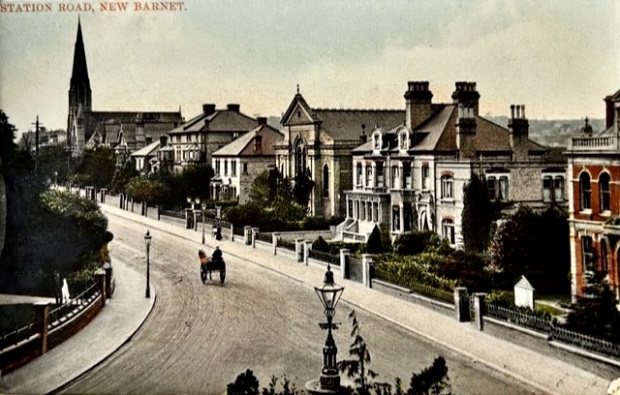
A fascinating insight into the life of wealthy middle-class households who set up home in the flourishing township of New Barnet in the late 1880s has emerged after research by family historians.
New Barnet was developed around a railway station for Barnet which was opened in 1850 following completion by the Great Northern Company of the line between London and Peterborough.
Initially the prime thoroughfare was Station Road which connected the station to the Great North Road at the bottom of Barnet Hill.
Imposing villas and terraced houses were built along the road as the up-and-coming railway village of New Barnet started attracting business and professional people who were moving into the London suburbs.
By the 1861 census there were nine households listed as living in Station Road comprising a total of 32 people of whom a quarter were servants. By 1881 this had increased to 33 households made up of 191 people of whom 43 were servants.
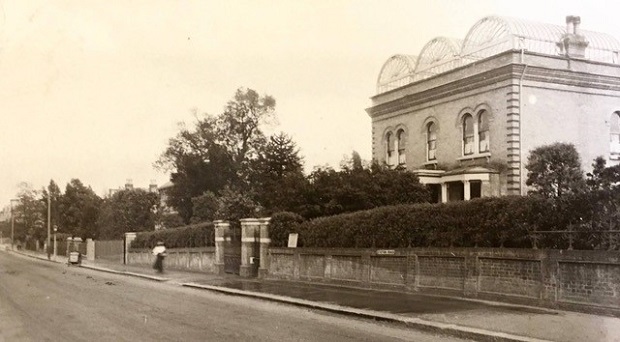
Family historians Elizabeth Burling and Karen de Bruyne – whose research into these newcomers to Barnet is published below – highlight the social divide that was apparent in Victorian times.
While middle-class families with servants were setting up home to the west of the station in villas along Station Road and Lyonsdown Road, working-class housing and shops were being developed along roads on the eastern side of the railway line.
There was an equally sharp contrast between these business and professional newcomers with people living at Underhill, at the bottom of Barnet Hill.
In 1851 there were 23 households, mainly working-class families of agricultural labourers, charwomen and similar occupations, half of whom had been born in Barnet.
New Barnet was described in 1876 as one of the “new half-finished railway villages” that were springing up close to London (James Thorne, Handbook to the Environs of London) and house building was said to have proceeded slowly in those early years.
East Barnet Gas and Water Company built a gas works in 1872 and provided water from a 500-foot deep artesian well.
The station was renamed New Barnet in 1884 and wholly rebuilt in 1896. Station Road, which had become the main municipal thoroughfare, was chosen by the East Barnet Valley local board as the site of an Italianate town hall which was built in 1891-2.
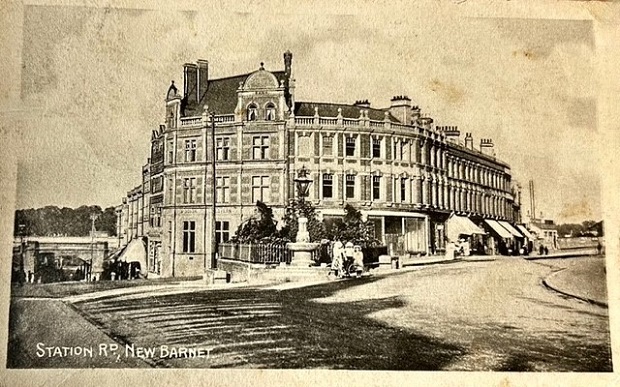
The pace of suburban growth accelerated at the turn of the century and by outbreak of the First World War, New Barnet’s development was almost complete.
In 1921 a war memorial was unveiled opposite the town hall, in front of an imposing Edwardian bank, dedicated to the 278 men of East Barnet who were killed in the conflict.
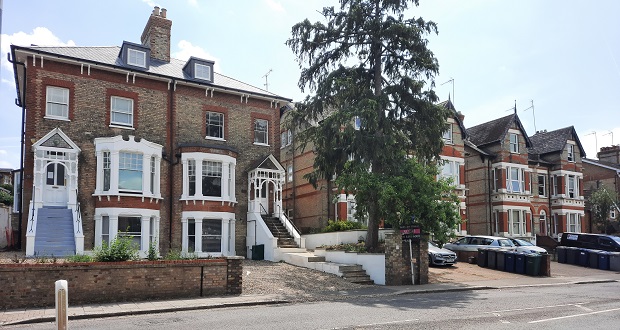
Some of the original houses remain in Station Road but many were
demolished in the 1960s and 1970s to be replaced by flats and office blocks
which have since been converted for residential use.
Here in full is a look back at the family life of those early years: The People of Station Road, New Barnet, by Elizabeth Burling and Karen de Bruyne.
The Great Northern Railway (GNR) was incorporated by the London & York Railway Act of 1846 with a view to building a railway line between those cities. By 1850, track had been laid locally and a station serving Barnet had been opened. It was located some ¾ of a mile north-west of East Barnet village and about a mile to the east of the town centre at Chipping Barnet. The railway had sliced the ancient parish of St Mary, East Barnet, in two making access from the east side, where the church and village were, to the Great North Road much harder. However, a new road was built connecting Barnet station (as it was then called) to the Great North Road at the bottom of Barnet Hill.
A settlement grew up around the station and the area became known as New Barnet but this name was not recorded in the 1851 census returns. These show that there was a railway contractor and some 20 railway labourers living in East Barnet Village, many lodging with villagers.
From at least 1861, the road from the bottom of the hill to the station was called Station Road. The census returns for that year show that there were only nine households living in this road. These contained 32 people of whom a quarter were servants. Only one ‘head of household’ had actually been born in Barnet – Charles Webb, a groom. The other heads were Noah Parker, a retired butcher from Essex, Margaret Ferguson, a clerk’s wife from Pembroke, Alexander Corsane, a scrivener from Leicester, David Duthort, a silk agent from London, Samuel Makling, a commercial traveller jeweller from Birmingham, Charles Sadler, a police officer from Oxfordshire, Thomas Byway, a railway navigator from Scotland and Samuel D Kember, a solicitor’s clerk from Camberwell. It seems possible that the railway might have attracted new residents who used it to commute to the City but only the silk agent looked like he may have worked in London.
The owner of the Lyonsdown estate had forced the GNR to buy the whole thing rather than the few fields needed for the laying of the track, so the surplus land was sold for housing and large villas constructed on it. These were occupied by wealthy middle-class families. This growth in the population necessitated a reorganisation of the local parishes in the 1860s. The chapelry of St John, Chipping Barnet, separated from the mother church of St Mary in 1866 and a church for the Lyonsdown side of the railway, Holy Trinity opened in 1868.
The 1871 census returns show 31 households living in Station Road, split between the three parishes. Only one head of household was still there from ten years earlier: Alexander Corsane. His house was Clarendon Villas, at the Leicester Road end of Station Road, and he was now described as a proprietor of houses. Ann Doughty, ‘retired upon dividends’ from Lincolnshire, and William O Boyes, attorney and solicitor from Buckinghamshire, are also both living in Clarendon Villas. Perhaps these were the houses owned by Corsane? Noel Lodge, next door, has multiple households too: Frank Candy, auctioneer, surveyor and estate agent from Somerset and Mary A Gow, an annuitant from Berkshire, but all of the other villas are occupied by single families. These two villas, together with another seven, are said to be in Lyonsdown parish. Once again, the heads of households in Station Road all appear to be well off and none were born in Barnet.
Down near the station, though, the houses were often more modest. A row of four houses which were known as Park Villas were occupied by Alfred J West, a warehouseman from Oxfordshire, Robert Main, a Civil Service clerk in the Long Room at Customs, originally from Scotland, Louisa Hilder, housekeeper from St George Hanover Square and Edward Wilkins, gardener from Wadesmill in Herts.
Living on Station Road next to York Road is Fanny S Davies from Oxfordshire. No occupation is given for her but she has 9 visitors from all over the place and four servants. Could this be a hotel? This building is described as being in East Barnet parish, as are only another three. These are Lismore House, occupied by John Livingstone, a general practitioner from Scotland, Clarence Villa, lived in by William Skelton, a hotel keeper from London, and another which housed John A Woolnough, a licensed victualler from Baldock. Next to this last house is Albert Road, so Woolnough is possibly living in what is now the Railway Bell pub.
By 1881 there were 33 households containing 191 people of whom 43 were servants. The heads of household came from Switzerland, Scotland and 15 English counties none of which was Hertfordshire. It seems possible that John Headland, a Chancery Pay Officer originally from St Marylebone, worked in London. Also, perhaps, Walter Barrett, East India merchant from Bristol, James C Knight, rope and twine merchant from Poplar, Robert Tod, cotton broker from Scotland and John Beazley, stock broker from Middlesex. The other residents had occupations ranging from cowman (William Howes from Bungay, Suffolk) to master mariner (Alfred Roper from Norfolk) and could have worked anywhere.
Walter Barrett, the East India merchant lived on Station Road with his wife Ellen, their six children and their housemaid, Emily Walsingham. Walter had been born in Bristol in 1840 but moved with his parents to live in Regent’s Park in London before 1851. His father owned property and his elder brothers were a solicitor and an architects’ assistant. Walter married Ellen Bastin in 1861 at St Pancras and by 1871 the couple and their young family were living in Kentish Town. They moved quite frequently and in 1891 they were living in Islington. Walter was then an accountant and secretary to a ‘Public Company’, so it does not look like he was an East India merchant for very long. By 1901 the family were living in Crouch End and Walter was once again an accountant. Walter’s death was registered in 1905 in Edmonton Middlesex, he was 65 years old and he was buried in Highgate Cemetery. Ellen died in 1929 aged 88 and was buried alongside her husband.
Next door to the Barrett family lived Robert Tod, a cotton broker who had been born in Scotland. He married his wife, Agnes Drysdale Leslie, in Islington in 1872. By 1881 they had four young children and lived in Station Road with their cook, Sarah Whitney, and a nurse, Elizabeth Houston (probably employed to help look after their youngest child who was just one year old). As a cotton broker, Robert might well have traded with Walter, as lots of cotton was imported from India. Robert and family had moved to Hornsey by the 1891 census, where he is shown as a cotton broker’s agent and the family had one servant, Dorothy Dennis. By 1901 the family had moved again, this time to Muswell Hill. Agnes died in 1910 and was buried in Islington Cemetery. In the 1911 census returns, Robert was living with all four of his unmarried children and their servant (Florrie Edith Hale) in Highgate. Robert died in 1914 and was buried alongside his wife in Islington Cemetery.
But was it the railway which encouraged these ‘foreigners’ to Barnet? Going back to the 1851 census returns and using Underhill as an example, there were 23 households containing 137 people who used this as an address. These were mainly working-class families of agricultural labourers, charwomen and similar occupations. Regarding the heads of households, 13 were indeed from Barnet but the rest came from Greenwich, Hackney, Hendon, London, Mile End, South Mimms, Bedfordshire, Derbyshire, Kent, elsewhere in Hertfordshire, Ireland and two people did not know (or would not say) where they were born.
By 1861, there were 20 households with 100 people in them altogether. Three of the heads were from Barnet with the others having been born in Cockfosters, Finchley, Greenford, Hackney, Hadley, Highgate, Paddington, Pinner, South Mimms, seven other English counties and even one in Australia. This suggests that the Great North Road was perhaps a greater conduit encouraging people to live in Barnet in the 19th century.
[The authors are both members of the local family history, the London Westminster & Middlesex Family History Society, who welcome anyone interested in genealogy, wherever their family was from.]
Thanks to Alan Last and Barnet: A Trip Down Memory Lane for photo research
1 thought on “Family research highlights upstairs and downstairs divide of life inside the once grand houses of New Barnet”
Comments are closed.

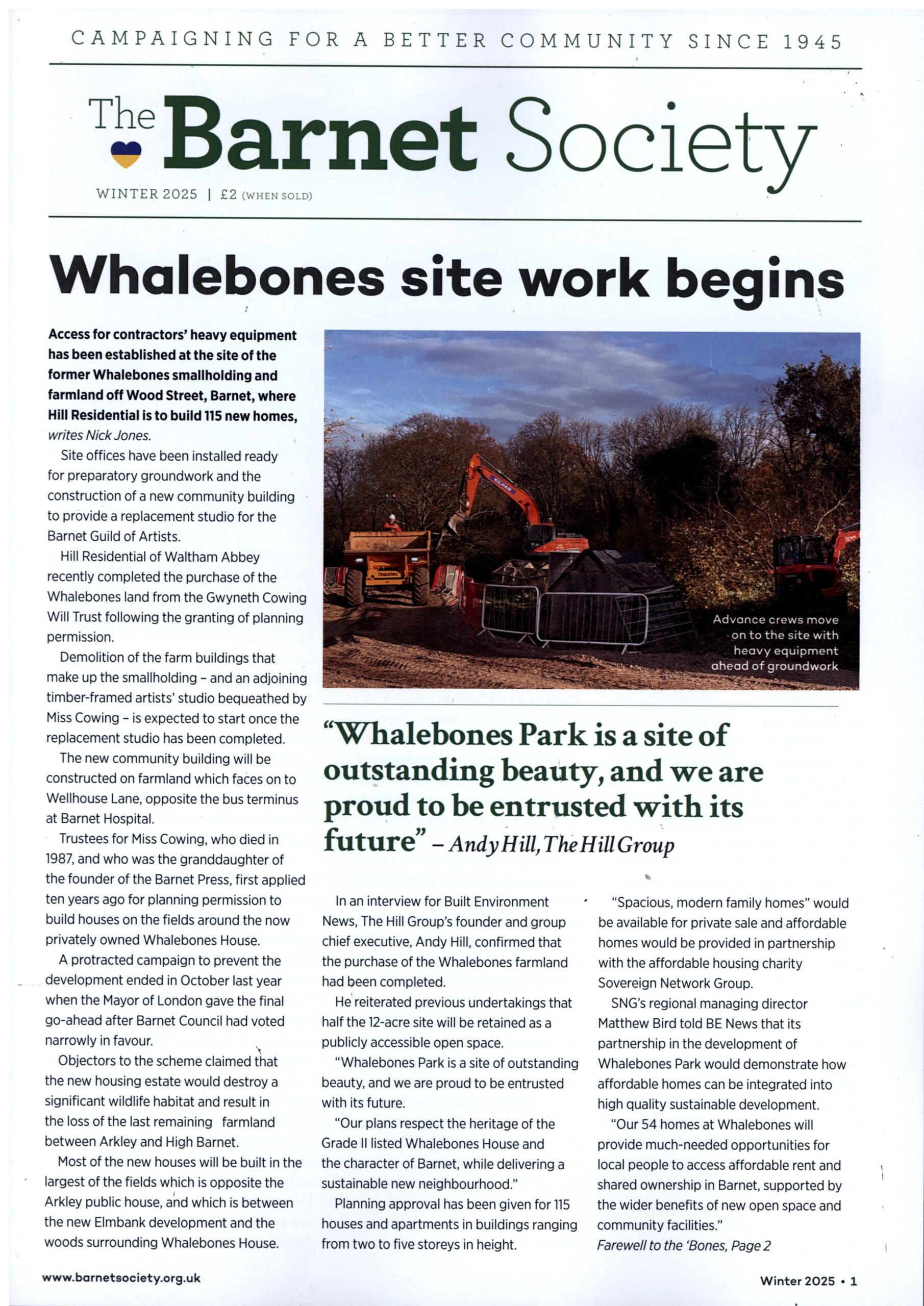
My grandparents Emily and Edwin Hill lived at 47 East Barnet Road from about 1910.
They ran a laundry. My grandfather collected the items in a hand cart. Took them home where my grandmother washed them. She had 4/6 gas washing machines in the back garden. My grandfather returned the items washed, dried and ironed in his hand cart.
My father was born in 1910 the forth of four boys.
The cottage was demolished in approx 1968 when my grandmother passed away, and the land became the car park for the MacMullens Pub which is still there today.
I wonder if you have any records of this in your records for New Barnet.